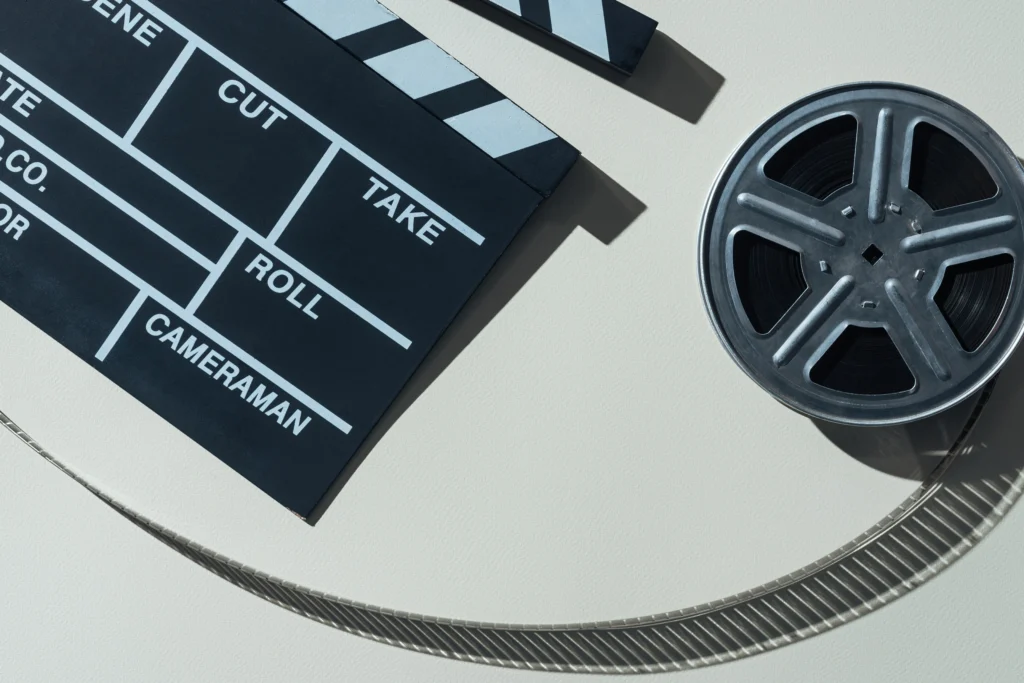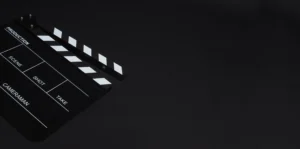
Film titles are more than just names; they set the tone for the entire movie experience. The fonts used in these titles play a key role in communicating the genre, style, and emotions of a film. Among the various font families, sans-serif fonts have increasingly become a favorite for movie title designs, especially in modern cinema. Sans-serif fonts are clean, simple, and versatile, making them effective in creating strong visual impacts. This article will explore the use of sans-serif fonts in film titles, highlighting key examples and analyzing their effectiveness in different genres.

Sans-serif fonts are characterized by the absence of decorative lines, or “serifs,” at the ends of strokes. This simplicity has led to their widespread use in modern design, including in film titles. But why are these fonts so popular in this context? Here are a few key reasons:
Different film genres utilize sans-serif fonts in unique ways to convey mood and tone. Let’s examine how these fonts are employed across various genres.
Action and thriller films often use sans-serif fonts to convey intensity, urgency, and tension. Fonts like Futura, Gotham, and Helvetica are popular choices for these genres because they are bold and impactful. For example, the John Wick series uses a bold, sans-serif typeface for its titles, reinforcing the film’s sharp and intense nature. Similarly, the Bourne films utilize clean, modern sans-serif fonts to match the fast-paced, high-stakes tone of the storyline.
Science fiction films, with their futuristic settings and advanced technologies, often choose sans-serif fonts for a sleek, modern look. Fonts like Eurostile and Univers are commonly used for their geometric forms, which give off a futuristic vibe. A notable example is the title of Blade Runner 2049, which uses a sharp, sans-serif font that mirrors the film’s high-tech, dystopian world.
While sans-serif fonts are often associated with modern and intense genres, they are also used in comedy and romance films, where they provide a more playful and lighthearted feel. Fonts like Avenir and Gill Sans are popular in these genres for their friendly and approachable appearance. The title for Crazy Rich Asians uses a sleek sans-serif font with elegant spacing, reflecting both the modernity and opulence of the film.

Some sans-serif fonts have become iconic due to their frequent use in film titles. Let’s look at a few examples:
The use of sans-serif fonts in film titles has evolved significantly over the years. In the early days of cinema, serif fonts dominated, as they were perceived as more formal and artistic. However, with the rise of modernist design in the mid-20th century, sans-serif fonts began to emerge in the visual language of cinema.
During the 1960s and 1970s, filmmakers began to experiment with minimalist design, and sans-serif fonts became more prevalent, especially in genres like science fiction and action. Stanley Kubrick’s use of Futura in 2001: A Space Odyssey was groundbreaking, setting the stage for future filmmakers to adopt clean, geometric fonts for futuristic themes.
In recent years, the trend has shifted even further toward minimalist typography. Today, sans-serif fonts are often used for their clarity and neutrality, allowing the visual elements of film posters and trailers to stand out without distraction. However, there’s also a growing trend of combining sans-serif fonts with creative, experimental layouts, where typography plays a more active role in storytelling.

One of the advantages of sans-serif fonts in film titles is their adaptability when combined with other visual elements. Designers often pair sans-serif fonts with bold imagery, unique color schemes, and texture to create a dynamic look. For instance, the title design for the Avengers films uses a strong sans-serif font, which is combined with metallic textures and a bold gradient to convey strength and power.
In some cases, sans-serif fonts are also used with motion graphics in film trailers and opening sequences. The clean lines of these fonts lend themselves well to dynamic animations, helping to create a sense of movement and energy.

When selecting a sans-serif font for a film title, several factors should be considered to ensure it aligns with the film’s message and tone. Here are a few tips for choosing the right font:
Sans-serif fonts have become a staple in film title design due to their clarity, modern appeal, and versatility. Whether it’s a fast-paced action film, a futuristic sci-fi adventure, or a playful romantic comedy, these fonts can effectively convey the tone and style of a movie. By understanding how to choose and combine sans-serif fonts with other design elements, filmmakers and designers can create compelling title designs that leave a lasting impact on audiences. As the film industry continues to evolve, we can expect sans-serif fonts to remain a key part of visual storytelling in cinema.